The ASRock X370 Gaming-ITX/ac Motherboard Review
by Gavin Bonshor on April 18, 2018 8:00 AM EST- Posted in
- Motherboards
- Gaming
- AMD
- ASRock
- Mini ITX
- ITX
- AM4
- Ryzen
- X370
- X370 Gaming-ITX/ac
CPU Performance, Short Form
For our motherboard reviews, we use our short form testing method. These tests usually focus on if a motherboard is using MultiCore Turbo (the feature used to have maximum turbo on at all times, giving a frequency advantage), or if there are slight gains to be had from tweaking the firmware. We put the memory settings at the CPU manufacturers suggested frequency, making it very easy to see which motherboards have MCT enabled by default.
Video Conversion – Handbrake v1.0.2: link
Handbrake is a media conversion tool that was initially designed to help DVD ISOs and Video CDs into more common video formats. For HandBrake, we take two videos and convert them to x264 format in an MP4 container: a 2h20 640x266 DVD rip and a 10min double UHD 3840x4320 animation short. We also take the third video and transcode it to HEVC. Results are given in terms of the frames per second processed, and HandBrake uses as many threads as possible.
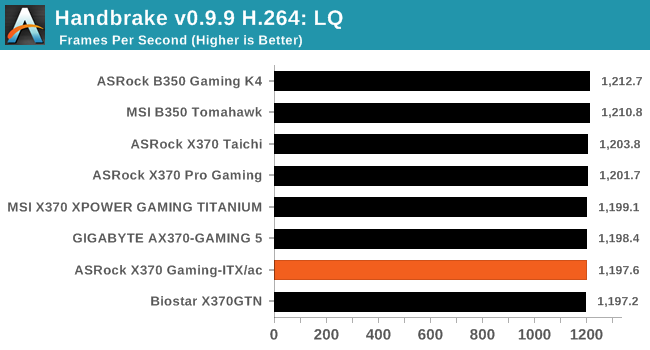
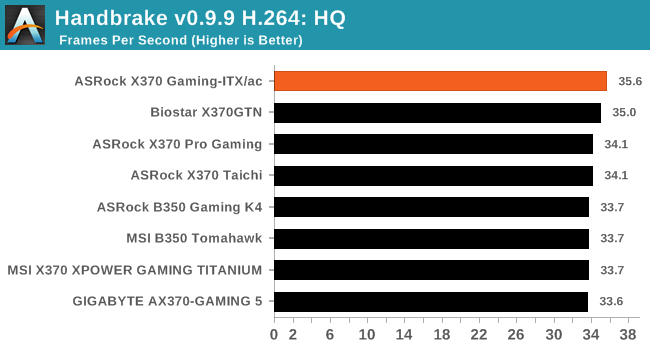
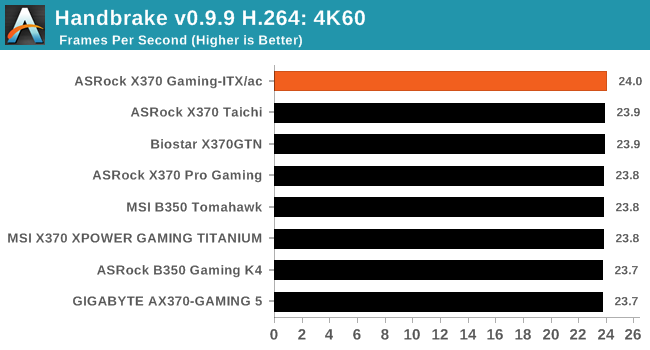
Compression – WinRAR 5.4: link
Our WinRAR test from 2013 is updated to the latest version of WinRAR at the start of 2017. We compress a set of 2867 files across 320 folders totaling 1.52 GB in size – 95% of these files are small typical website files, and the rest (90% of the size) are small 30 second 720p videos.
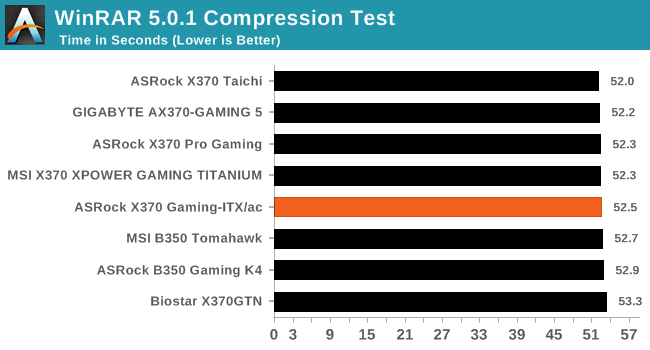
Point Calculations – 3D Movement Algorithm Test v2.1: link
3DPM is a self-penned benchmark, taking basic 3D movement algorithms used in Brownian Motion simulations and testing them for speed. High floating point performance, MHz and IPC wins in the single thread version, whereas the multithread version has to handle the threads and loves more cores. For a brief explanation of the platform agnostic coding behind this benchmark, see my forum post here. We are using the latest version of 3DPM, which has a significant number of tweaks over the original version to avoid issues with cache management and speeding up some of the algorithms.
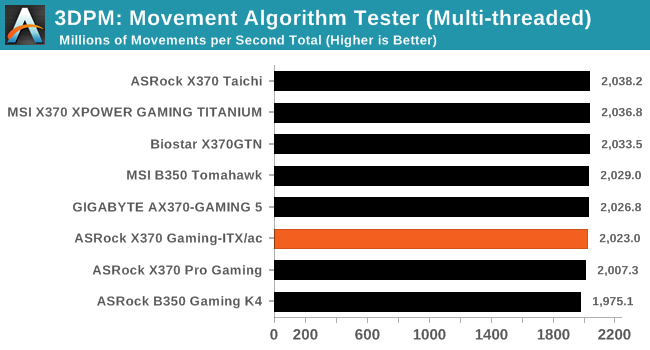
Rendering – POV-Ray 3.7.1b4: link
The Persistence of Vision Ray Tracer, or POV-Ray, is a freeware package for as the name suggests, ray tracing. It is a pure renderer, rather than modeling software, but the latest beta version contains a handy benchmark for stressing all processing threads on a platform. We have been using this test in motherboard reviews to test memory stability at various CPU speeds to good effect – if it passes the test, the IMC in the CPU is stable for a given CPU speed. As a CPU test, it runs for approximately 2-3 minutes on high end platforms.
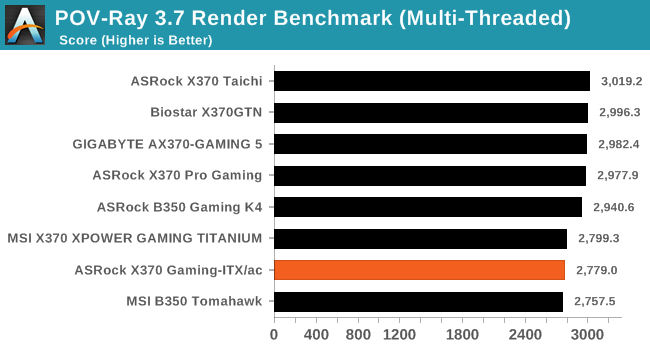
Synthetic – 7-Zip 9.2: link
As an open source compression tool, 7-Zip is a popular tool for making sets of files easier to handle and transfer. The software offers up its own benchmark, to which we report the result.
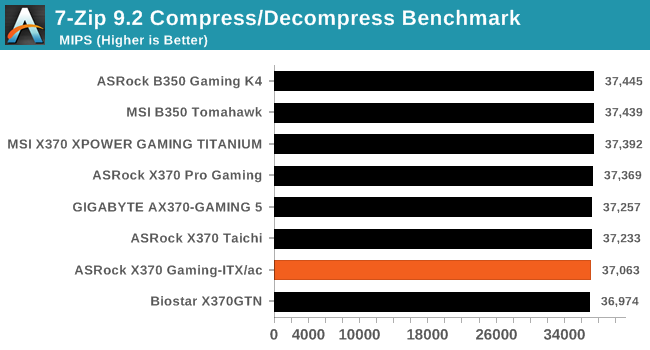










30 Comments
View All Comments
5080 - Wednesday, April 18, 2018 - link
If have built a few systems using this board and the B350, but was never able to get a Bristol Ridge APU to work. I followed the approved memory list from ASRock without success. I Always ended up using a Ryzen CPU and Cheap GPU or since March Raven Ridge. It would be interesting if anyone else got this to work with a Bristol Ridge APU?gavbon - Wednesday, April 18, 2018 - link
If I had a Bristol Ridge APU to hand, I would have tried for you! I have used a Ryzen 3 2200G though and it worked fine :)5080 - Thursday, April 19, 2018 - link
Yes, I just finished building a system for a friend with this board and Ryzen 5 2400G. It works great, but Bristol Ridge is still a no go even with the latest BIOS 4.50.Geranium - Wednesday, April 18, 2018 - link
Gavin, are you sure this board has USB 3.1? Cause Asrock's website has no mention of USB 3.1.http://www.asrock.com/mb/AMD/Fatal1ty%20X370%20Gam...
SuperiorSpecimen - Wednesday, April 18, 2018 - link
3rd bullet point from the bottom of the first list.jtd871 - Wednesday, April 18, 2018 - link
I only see 1 19-pin USB3 header on the mobo top.jtd871 - Wednesday, April 18, 2018 - link
ASRock manual sez that header supports up to two ports.gavbon - Wednesday, April 18, 2018 - link
I have the board in my hands now (you had me second guessing myself) and I can confirm there is a USB 3.1 Gen1 header and a USB 2.0 header; each of them gives an additional two ports.gavbon - Wednesday, April 18, 2018 - link
I think the confusion is where it says 2 x header (it means 2 ports from a header, not 2 headers etc) - Maybe I should make it clearer in the future!gavbon - Wednesday, April 18, 2018 - link
Yeah was a total brain fart on the USB 3.1 Gen2, for some reasons it's been ingrained in my brain from lack of sleep and X470! - I blame the lack of Kenco in my cupboard! - Edited now, they are USB 3.0 (Type-C included)